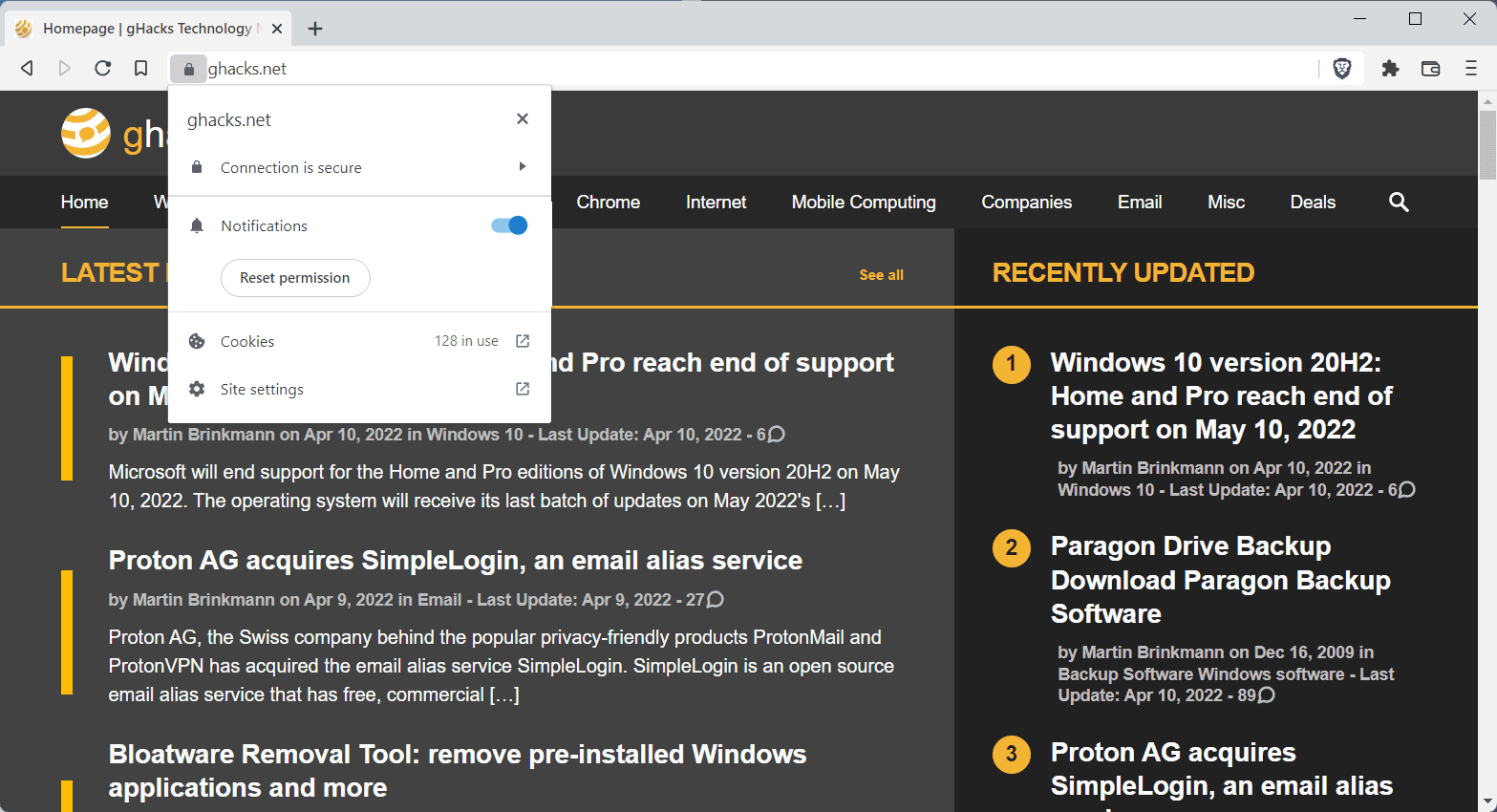The Windows 11 notification system can be used by apps to send notifications to the user’s desktop. Applications can use it to send reminders to the user. A common scenario supported is push updates by sites. Subscribe and you will receive desktop notifications when the site is updated.
Sometimes these notifications can be annoying or unwanted, such as when you click allow instead of block when prompted in your browser of choice. While it’s possible to manage in-browser notifications, it’s not as easy as it could be, as you have two main options for managing them:
- Open the site in question and click the icon to the left of the site address to change the status of the notification.
- Open browser settings and navigate through several levels to access site settings options. There you need to find the site in question and change the preference.
Again, there is a browser setting supported by most web browsers to completely disable notifications. All Chromium-based browsers have these in the site settings, and in most cases loading chrome://settings/content/notifications brings up the correct configuration screen. Just change the setting to “don’t allow” and you’re done.
Firefox-enabled users load about:preferences#privacy in the browser’s address bar, scroll down to Permissions, select the Settings button next to Notifications, and check “block new requests asking for notifications” for process in the browser.
Windows 11 Notifications
Web browsers aren’t the only types of apps that can send notifications. Calendar and messaging apps, games, and any type of app can use the system.
Windows 11 users who do not wish to receive notifications can completely disable them in the operating system. This speeds up the process considerably.
Here’s how it’s done:
- Select Start, then Settings.
- Open the System and there the Notifications section.
- To turn off all notifications, toggle the main notifications setting at the top of the page that opens.
You can also turn off notifications for specific apps. Keep the main Notifications setting enabled for this. Scroll down to the list of apps and locate the program you want to modify. The list is sorted by recency, but you can change it to an alphabetical list if you prefer. There is no search option on the page.
Use the main On/Off toggle to disable notification permission for selected apps.
The “>” button opens additional customization options:
- Define how notifications are displayed (on the desktop as banners AND/OR in the notification center).
- Enable or disable playing a sound when notifications arrive.
- Set a display priority for app notifications in Notification Center.
You can change the app preferences so that notifications only show up in the notification center and not on the desktop.
You can easily undo any changes by clicking the toggle or checkbox again.
Now you: do you use notifications on your devices?
Summary

Article name
How to block all notifications or notifications from specific apps in Windows 11
The description
Learn how to block notifications for individual apps or for the entire system on devices running Windows 11.
Author
Martin Brinkman
Editor
Ghacks Technology News
Logo

Advertisement




/cloudfront-us-east-1.images.arcpublishing.com/gray/SXFJEGFYLNAMVJIFCPGNO3KSP4.bmp)

